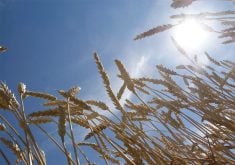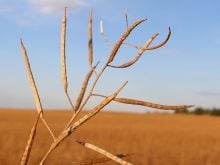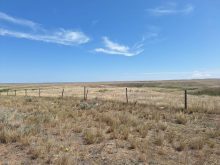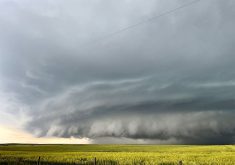The thing that prairie farmers feared the most just a few short weeks ago has now ascended to the top of their wish list.
With this year’s harvest all but complete, growers are looking skyward and hoping for a prolonged, prairie-wide soaker.
Precipitation has been scarce or non-existent across much of Western Canada this fall.
In many areas, fields are rock hard, pastures are parched and winter cereal crops are struggling to take root.
In its latest crop report, released Oct. 11, Saskatchewan Agriculture reported topsoil moisture on cropland at two percent surplus, 36 percent adequate, 41 percent short and 21 percent very short.
Read Also

U.S. bill could keep out Canadian truckers
The Protecting America’s Roads Act, which was tabled in the U.S. House of Representatives at the beginning of October, would “rid the country of illegal immigrant commercial truck drivers and ineligible foreign nationals.”
Provincial pastures and hayland are facing similar conditions with 38 percent of total acres short of moisture and 25 percent very short.
“That’s probably what everyone is focusing on now is moisture,” said Grant McLean, provincial cropping specialist with Saskatchewan Agriculture.
Dry conditions in Alberta were perfect for harvest, but the lack of moisture has hampered fall work and delayed emergence of recently planted winter crops, including winter wheat and fall rye.
James Wright, a risk management specialist with Alberta Agriculture, said some parts of the province have received moderate amounts of rainfall over the past two to three weeks.
However, many areas are still extremely dry, he added.
“Some areas are very dry, especially down south where they haven’t really had any moisture for most of the summer period, other than a few showers and some hailstones,” Wright said.
“That’s where most of our summer crop is seeded, is below that Highway 1 line, so I think we’re probably going to see … (fewer) acres of winter wheat and fall rye this year than what we’ve had in the past.”
In Manitoba, winter cereals got a poor start in many areas, said Pam de Rocquigny, spokesperson for Manitoba Agriculture.
Rain and snow over the past few weeks have helped crop development, but it remains to be seen how the province’s winter crops will fare.
“With the drier conditions, a lot of (winter) crops were sitting in dry soils and weren’t doing too much in terms of either germinating or emerging,” she said.
“Obviously the recent precipitation has helped that.
“It (winter wheat) is obviously not going to be as advanced as perhaps we’d like to see it going into the winter but what effect that will have remains to be seen. We’ll just have to wait and see what Mother Nature throws at it over the winter months.”

















